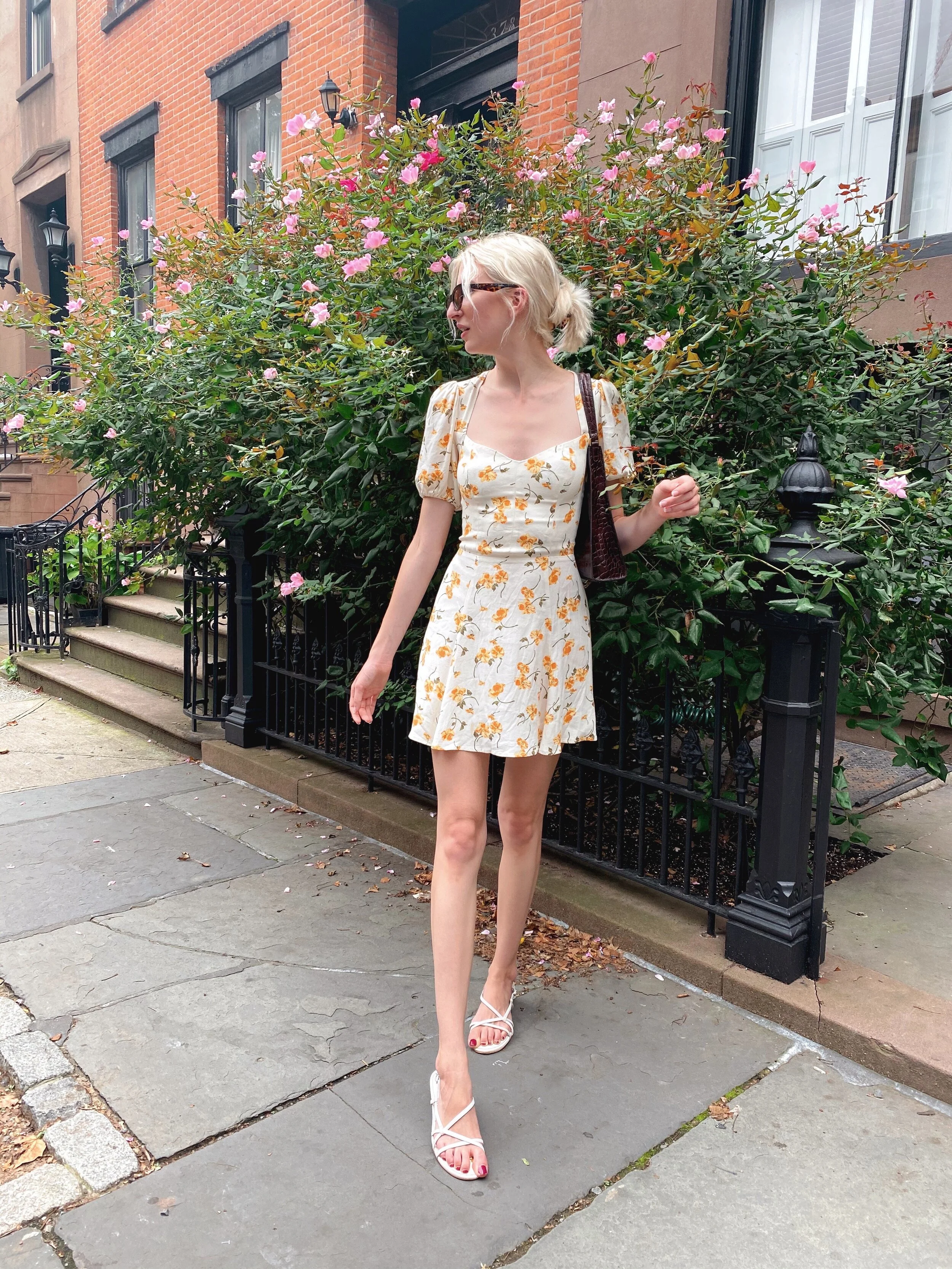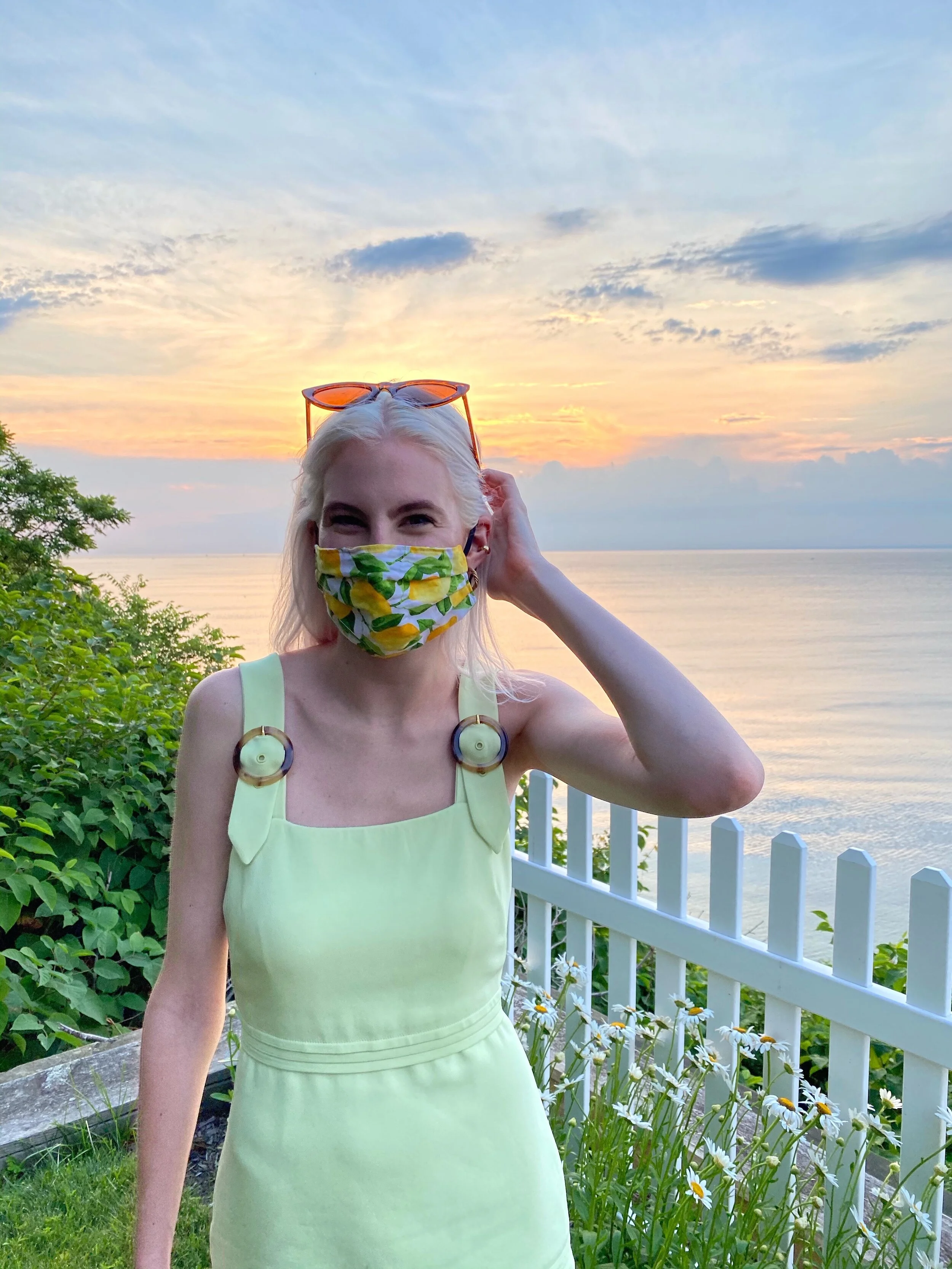Sustainable Fabrics 101
Sustainable fashion can mean many different things, but one of the most important is undeniably material composition. Synthetic fabrics like polyester and nylon have become extremely popular in fast fashion because they’re cheap and versatile, but since these garments are created to be thrown away each season, they generate an incredible amount of textile waste. These types of fabrics are not able to biodegrade, and can even harm environments further by releasing microplastics. In 2018, 11 million tons of textile waste was put into landfills in the US alone, making up 7.7% of all consumer waste.
While there’s no easy solution, taking a closer look at the tag before purchasing an item can significantly reduce the amount of synthetic (i.e. petroleum based) non-biodegradable fibers that we generate.
PLANT & ANIMAL DERIVED
Plant based fabrics are superior for so many reasons! While they’re not carbon-neutral by any means, they’re easier to recycle, and come from cleaner sources. Additionally, they’re typically much more comfortable to wear. Cotton and linen are extremely breathable and will keep you cool on hot summer days, while wool is naturally insulating and will protect you from the cold.
Cotton
Cotton is one of the most widely used fibers in the clothing industry. It’s made from the seed fibers of the cotton plant, and often blended with other fibers depending on the garment. When shopping, look for certified organic cotton, as these will be produced without any pesticides, synthetic fertilizers, or genetically modified seeds, which can harm environments.
Linen
Linen is one of the BEST fabrics because it’s made from flax, which is a resilient plant that can be grown under much harsher conditions and with no fertilizers. The entire flax plant is used for various purposes, so there’s zero waste, and it’s 100% biodegradable. The downside is that it can be expensive, but there are tons of great brands making affordable linen clothing, and a well-made garment will last you many years.
Wool
Wool comes from shaving the hair of sheep and spinning the fiber into a thick and naturally heat-trapping fabric. It is a great fall and winter fabric, and has come a long way from the itchy, bulky sweaters you may have grown up with. A good quality wool garment will keep you warm and last a long time with proper care.
Silk
Silk comes from silkworms, and is a beautiful and extremely soft fabric. It can take more work to clean and take care of, but most silk garments are classic staples and will last a very long time. Since this fiber involves animals, It’s important to vet brands and ensure they are sourcing ethically farmed silk.
Ramie
Ramie has a very similar look to linen, but with more resistance to wrinkles. It’s made from the stalks of the Chinese nettle plant, is naturally resistant to mold and bacteria, and can be healthily grown without any pesticides, herbicides and chemicals. Ramie is harder to dye than most fibers, making the colors available more limited, but can be a great option for light summer clothing.
Semi-Synthetic
Though these fibers are derived from natural materials, they require chemicals in the production process, so are considered to be a semi-synthetic fabric. They are a great alternative to classic synthetic fibers, and are often easier to care for.
Lyocell/Tencel
Lyocell is made by dissolving plant pulp, and then reconstituting it by dry jet-wet spinning. It’s breathable, strong, and moisture-wicking, so it’s often used in lightweight basics. Like other semi-synthetic fibers, chemical agents are used in the production process, but for lyocell, 99.5% of chemicals used are a ‘closed-loop’ process, meaning they get re-used over and over again instead of being dumped into the environment. The most well known lyocell is Tencel, which goes further by sourcing it’s materials from responsibly managed forests. you can find Tencel garments at a wide array of brands from fast fashion retailers like H&M to designers like Mara Hoffman.
Modal
Modal is a plant-based manufactured fiber made from beech tree wood pulp. It’s very similar to Lyocell, but It’s extremely soft, making it popular in sleepwear, It uses more chemicals than lyocell to make, but is 50% more absorbent than cotton, doesn’t shrink, and is fully biodegradable.
Rayon
Rayon is essentially the parent of lyocell and modal. It is extremely versatile, and can be manufactured to imitate the look of silk, cotton, wool, and more, often while being more durable and easier to care for. Fibers in the rayon family are great alternatives for synthetic fibers.
Viscose
Viscose is often referred to as ‘vegan silk’ since it can be woven into a satin that looks and feels very similar to real silk. It’s close to rayon in the source of materials and production process, and is lightweight, breathable, and great for tons of clothing options from athleticwear to dresses.
CHEMICAL-BASED
These are the ones you want to stay AWAY from. Even if it’s blended with another plant-based fiber, that still means they fabric will not biodegrade properly. Buying items that use synthetic fibers secondhand is definitely better, but be careful of how you wash and discard these items as some can release microplastics into water.
Acrylic
Acrylic is a manmade polymer fiber created from fossil fuels through a chemical process. Acrylic closely resembles the look and feel of wool fibers, and repels water, but is also highly flammable. Acrylic is often mixed with wool to save manufactures money.
Nylon
Nylon is primarily derived from petroleum oil, and accounts for about 12% of the world's synthetic fiber production. It’s most commonly found in athleticwear, shapewear, and intimates, but has also gained popularity in the luxury market as for a ‘sporty’ look in both clothing and accessories.
Polyester
Polyester is essentially plastic fiber. It’s made from turning petroleum into plastic pellets and then melting those down and molding them to create fibers. It has no moisture wicking ability, which is why you may get that sweaty/clammy feeling while wearing it, and it is non-biodegradable. While recycled polyester is a better option, low quality polyester can release microplastics into water when washed, which end up in oceans, local water supplies and eventually humans, plants, and animals.
Spandex
Spandex is found in everything from leggings, to jeans, to summer dresses. It’s the fiber that makes everything stretchy. It also goes by the names Lycra and Elastane, which are interchangeable. It’s typically not a lone fiber, but instead woven into other synthetic or natural fibers to add elasticity to the fabric. Unlike most synthetic fibers, elastane is made entirely from chemicals that are synthesized in lab settings, however they are still non-biodegradable and contribute to ocean microplastics.
So check the labels! You’ll be amazed at what your clothing is made from, and hopefully you can start seeing the difference in quality between synthetic and natural materials.
xo,
Audra
Read Next: 7 Sustainable Brands To Shop













